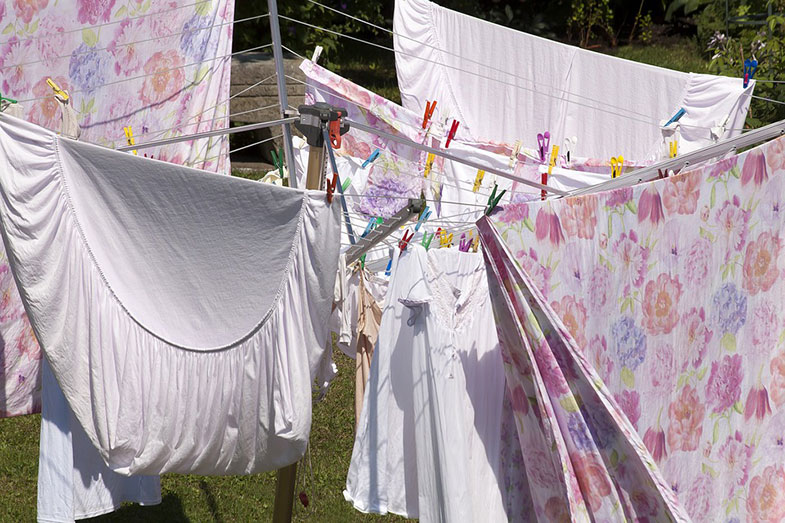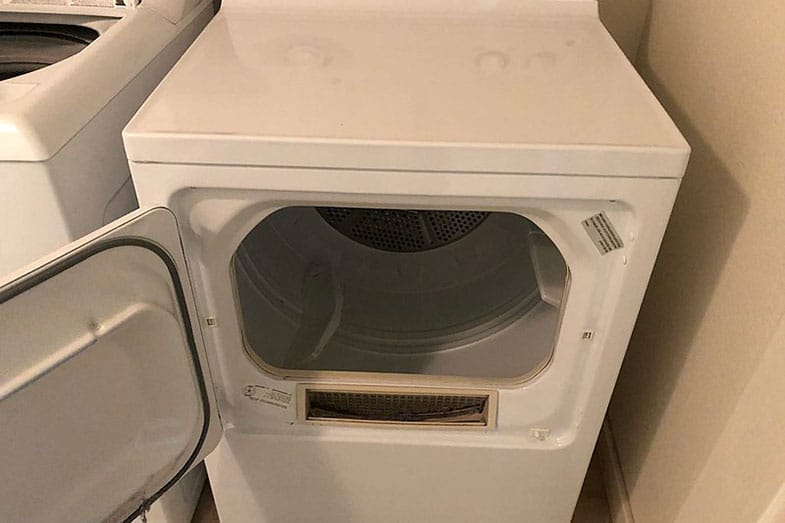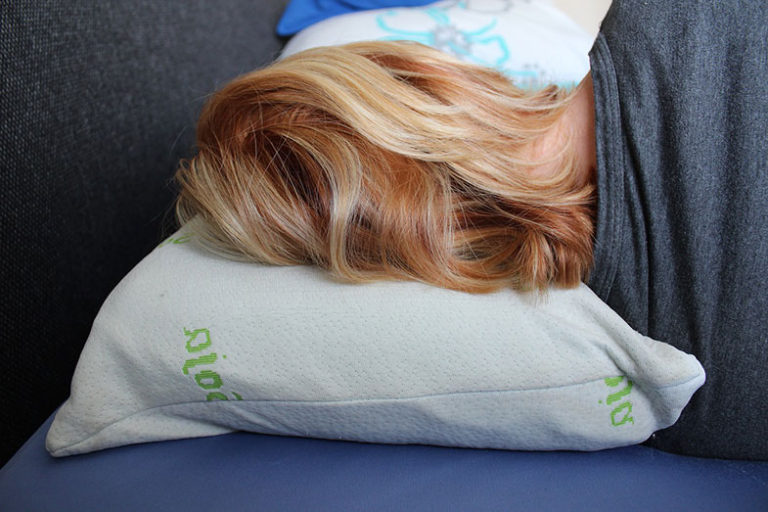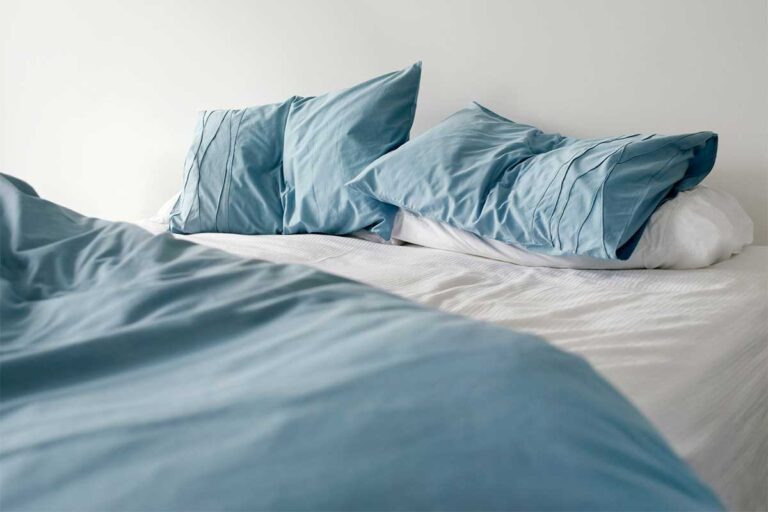How Long Do Bed Sheets Take to Dry Outside?
Disclosure: We may get commissions for purchases made through links in this post.
Using a dryer all the time will only lead to high electric bills. However, if you’re in a hurry to dry your bed sheets, an alternate method is to hang them outside. But, can you rely on sunshine and fresh air alone? In this post, we’ll discuss how effective the outside is in drying your sheets.
How long do bed sheets take to dry outside? It all depends on the temperature, humidity, placement, and the material of your sheets. On a hot, summer day with a light breeze, expect thin bed sheets to dry in 30 minutes. Thick bed sheets should take around two hours.
What if you’re going to wash the sheets later in the day and dry them out overnight? Let’s think about other factors that can prolong the drying of your sheets.

Drying Sheets Overnight
Heat isn’t always associated with sunshine. If it was a hot day, the warm temperature might remain until nighttime.
So, even if you hang your bed sheets overnight, expect them to be completely dry in the morning. It will probably take at least five hours, but it won’t matter if you’re asleep. That’s better than hanging freshly, washed sheets on a cloudy day which may force you to wait around eight hours.
However, during humid months, drying your sheets overnight isn’t advisable. Too much moisture in the air will only make the sheets damp until morning.
Humidity
Your bed sheets will dry faster if the air has less moisture. It’s easier for air to absorb or dissipate water from wet sheets if it’s less humid outside. That’s why a sunny day isn’t a guarantee for faster drying time.
Where to Dry Your Sheets
Regarding placement, if your clothesline is near overhanging wires and tall trees, their shadow or shade will possibly reach the sheets and make them dry slower. Make sure your clothesline is in a very spacious area away from tall objects.
Material
And, since the bed sheet’s material is a huge factor, you should know that polyester dries quicker than cotton. Cotton is better at absorbing moisture, but polyester is very resistant, which speeds up drying time.
How Do You Dry Bed Sheets Fast?
There are extra steps you can do to make the drying process faster. As we’ve mentioned before, you should hang your sheets correctly. What exactly is the correct way, though?
There are two ways based on how full your clothesline is.
- If there’s still space, you can make a “sack” to let the sheet catch the wind. To form the sack, the first thing you should do is fold the bed sheet in half. Then, pin each corner of the open end to a specific spot on the line until you form a square or diamond. Your sheet will look like a large pouch hanging from your clothesline.
Don’t worry about strong winds; the sack you’ll make with your sheet will have open sides since you have to pin some corners. Rest assured all sides should be dry. - The other way to hang your bed sheets is through the traditional method. After removing excess water from the sheet, fold it over the line crosswise.
But, don’t forget to pin all corners to join the two sides and secure the sheet. Before you hang another one, spread the sheet like a sail to allow airflow.
To save you from searching for other line-drying tips, we’re going to include the dos and don’ts of hanging different kinds of shirts, towels, and socks.
What To Do:
- Pin the bottom part of shirts and dresses if they have sleeves.
- Pin the shoulders of sleeveless tops to retain their shape.
- Hang the pants through their waistbands and pin up their cuffs if they’re too long.
- Fold one end of the towel for approximately three inches before pinning it on the clothesline.
- Place the socks in pairs.
- Turn all colored items inside-out to avoid fading.
What Not To Do:
- Don’t pin the shoulders if there are sleeves to prevent a broader look.
- Don’t fold the sleeveless shirts over the clothesline.
- Don’t hang the pants through their cuffs to avoid stretching them.
- Don’t fold the wet towels in half when you hang them to stop the clothesline from sagging.
- Don’t scatter the socks to avoid mismatched pairs.
- Don’t hang the colored items under direct sunlight.
For a much faster way to dry sheets, clothes, and other items, the obvious answer is to use the dryer. It should take 30 minutes regardless of the sheet’s material. The problem, however, is the high possibility of tangling. That’s one of the reasons why many people still prefer clotheslines.
How Do You Dry Bed Sheets in the Dryer Without Tangling?

Whenever you choose to use a dryer, remember the following steps to avoid tangling bed sheets:
- Spread the sheet once you remove it from the washing machine.
- Shake the sheet to make sure it has no folded sections.
- Check if the dryer contains some items to prevent overloading.
- Place the sheet in the empty dryer carefully to keep it loose.
- Put a clean dryer ball, tennis ball, or unfolded towel on the sheet to stop the fabric from folding or twisting.
- Let everything tumble-dry inside until the sheet is 100% dry.
Despite the benefits of dryers, try your best to dry your sheets outside as much as possible. Once every two months will do if you’re too busy. Sunshine can bring back the pristine look of white bed sheets (view on Amazon) because of its natural disinfecting properties.
What Setting Do You Wash Bed Sheets On?
The way you wash your bed sheets can also be a factor in the drying time. More importantly, you can preserve their quality if you wash them properly. For the sake of general care and maintenance, find out how to clean and store bed sheets like a pro.
For starters, the appropriate setting for bed sheets is generally anything that can give you a higher temperature. Heat is crucial to remove dust mites and germs from the fabric thoroughly, but the level varies according to the sheet’s specific material.
Polyester should only be exposed to warm water to remain intact for years. On the other hand, cotton is so durable that it’s best cleaned with hot water.
The Rest of the Tips Are as Follows:
- Make sure the bed sheets are machine washable. Some fabrics are so delicate that they should only be hand-washed.
- Wash your sheets once every two weeks (the more often, the better). This interval is the perfect balance between convenience and hygiene.
- Don’t mix lightly colored sheets with darker ones. Just like the reminders you always hear about washing your clothes, black, red, and other vivid colors will easily bleed.
- After the drying process, iron the sheets to ensure zero dust mites and germs on the fabric. This will also help you save space in the storage area because of the tidier folds.
- The storage space must be cool and dry to preserve vibrant colors.
- If the bed sheet is part of a set, store it inside the pillowcase to avoid looking for its match.
- Buy two or three sheets for your bed alone for easier weekly rotation. With just one sheet, there’s a chance you won’t be able to sleep on your bed if you can’t dry it ASAP.
Since temperature setting isn’t the only thing you should adjust on most washers, it can be quite confusing if there are a lot of modes to choose from.
That’s right; some washers have a particular setting just for sheets. So don’t hesitate to go all out when you’re off to buy a new washer. Most of the new models have everything you need for an easier laundry time, whether your load is heavy or not.
What Happens If You Don’t Change Your Sheets?
The idea of dust mites and germs all over your sheets is nothing compared to what’s really happening. It turns out that the dead skin cells you shed every night lead to a more disturbing fact.
Did you know that a human can naturally shed millions of skill cells in just one night? Not only that, they serve as food for dust mites. That’s why hundreds of those microscopic creatures linger on your bed sheet. Just imagine how packed your sheets are after a month of use.
Additionally, the feces of dust mites cause allergic reactions like runny nose and itchy eyes. If you’re sensitive to allergies, you’ll have no choice but to observe regular cleaning and maintenance.
Bacteria and Fungi
There’s something even worse than dust mites — bacteria and fungi can stay on your sheets, too! Some of the microorganisms that possibly exist on your bed are so dangerous that they can cause infections in your internal organs.
On a lighter note, unchanged bed sheets are like giant wipes. If you’re wearing makeup or other cosmetic products every single day, you’re more likely spreading the substance all over the fabric when you lie on your bed fresh from work or errands. Using those contaminated sheets for several weeks may lead to acne and other skin problems.
References
- https://www.quora.com/How-long-will-it-take-for-clothes-to-dry-if-left-outdoors-overnight
- http://thetanglednest.com/2009/05/laundry-secrets-from-our-grandmothers-best-ways-to-line-dry/
- https://tide.com/en-us/how-to-wash-clothes/washing-different-fabrics/how-to-wash-bed-sheets
- https://www.businessinsider.com/bed-how-often-should-wash-sheets-dust-mites-fungi-bacteria-2019-5






